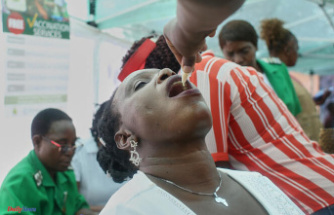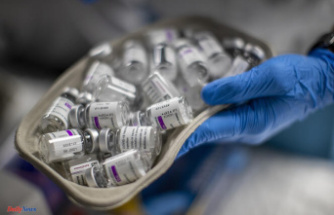This is a shocking figure, brandished by political leaders of all stripes: a third of farmers live on less than 300 or 350 euros per month. It was mentioned on January 24 on in Rungis (Val-de-Marne) in 2017. Problem: it is defeated by most experts.
Where does this number come from?
This estimate comes from the Mutualité sociale agricole (MSA), an organization which calculates the amount of social contributions paid by farmers on the basis of their income. It dates from 2017, and relates to the year 2016, but continues to circulate today. The MSA, which admits the dated nature of the figure, no longer “communicates” on it, it explains to Le Monde.
As soon as it was published, the impressive figure was widely reported by the media. But specialists in agricultural life quickly challenge this simplistic presentation of agricultural income, over which specialists are tearing their hair out. “It’s a horrible headache to measure, calculate and compare, especially with salary categories. Every time we say that a farmer earns so much, we have to put a thousand quotation marks,” warns Gilles Laferte, rural sociologist at the National Institute of Agricultural Research and the Environment (Inrae).
Why is this figure disputed?
Since its publication, the MSA communication has sparked debate and criticism on the methodology, form and substance. “These 350 euros, we must forget them, it was an error, a false communication”, estimates Nathalie Delame, agricultural economist at Inrae.
The MSA considers a farmer to be any person owning at least one hectare of useful agricultural land. However, this is a very low level: the average surface area of farms was, in 2020, 69 hectares. It is below the thresholds used by the Ministry of Agriculture to define a farmer. However, the lower the surface area we consider, the lower the average income. The agricultural profits (BA) calculated by the MSA are 21,500 euros, when the current profit before tax (RCAI), a harmonized European indicator more focused on medium or large farms, is 33,000 euros, calculated researchers from INRAE in 2021.
“To be registered, you only need to have 2,000 square meters of orchard, five sheep or a cow. They are often retirees. And it is not with five sheep that you are going to ensure a minimum wage,” Lucien Bourgeois, an economist specializing in agricultural issues and author of an analysis on farmers’ income in the journal Paysans et société, explains to Le Monde in 2018.
The MSA also includes professions with very different logics in its calculations, such as landscapers or fishermen. The MSA assured, at the time, that its analysis focused 95% on people whose sole or main activity was agriculture. The income levels of the farms considered lead economists to consider that the figure includes city dwellers who own a farm in the countryside, or farmers who are no longer active, but who for financial, patrimonial or emotional reasons, have retained a part of their land or their animals.
The other criticism concerns the presentation in the form of monthly income. “It’s not honest,” laments Lucien Bourgeois. “Talking about 300 euros per month is an employee’s way of thinking. An independent farmer doesn’t think like that,” objects Nathalie Delame.
The operator is often self-employed and lives on his farm. His household income is therefore partly confused with that of his activity. He therefore does not have a “salary” strictly speaking, he chooses what he pays himself. Furthermore, what his agricultural activity brings in is used both for his personal consumption and for investments, in machinery (to increase productivity) or in land (to develop his assets). This last practice is all the more common as farmers contribute very little, most prepare for their retirement by relying on additional income, particularly rental income. For tax reasons, they also have an interest in switching operating income into investments.
Finally, underlines Ms. Delame, a growing proportion of farmers have additional activities (bus driver, ski instructor in low season, etc.), rental income (linked either to their land or to their real estate assets, higher than the national average) or linked to non-agricultural exploitation of their land (table d'hôte, wind turbine, direct sale, etc.). Not counting the spouse's earned income. A farmer can thus decide to pay himself 300 euros of agricultural income a month, without this accounting for the full picture of his financial situation.
The statement that one in three farmers earns less than 300 euros per month suggests the idea of regularity in their income. Nothing is less true in agriculture, where there are many hazards, between the vagaries of the weather, diseases and the extreme volatility of prices. This fluctuating situation is integrated into the economic practices of farmers, who tend to save to cushion bad seasons.
“A bad year, we turn our backs; a second year, we start tapping into the reserves; a third is not possible,” explains Nathalie Delame. It is to account for this unpredictability that in 2021, when seven researchers from Inrae sought to calculate the income of French farms, they carried out their study over fifteen years.
According to their calculations, the current income before tax (RCAI) of a contributor is less than 350 euros per month one year out of seven, with significant variations from one sector to another. It is therefore likely to be lower than the famous MSA threshold one year in four for fruit producers, and one year in twelve for cattle breeders. But this indicator only has meaning in relation to the results of positive years. The average RCAI in a bad year is minus 9,000 euros, but reaches 40,300 euros in a good year.
These figures themselves remain inconclusive. As its authors recognize, “the analysis ignores by construction the field of “small” farms in the statistical sense of the term, at least part of which is likely to achieve structurally weaker economic results than their counterparts”. Furthermore, all these statistical constructions suffer from survivor bias: by definition, farmers who have gone out of business no longer declare their income.
What do we know about agricultural income today?
According to INSEE, the average income in 2021 of an agricultural household was 1,910 euros per month. But this average hides enormous disparities: financial income can be much higher, or on the contrary zero, or even negative. “40% are large agricultural companies and part of the big economic bourgeoisie. But there is also a whole section with low, or even very low, income, despite a heritage which distinguishes them from the workers, to whom they are culturally close,” explains Gilles Laferte, from Inrae, who speaks of “the working class with heritage”. .
According to INSEE, 15% of self-employed farmers declare zero or deficit income and one in five benefits from the agricultural microbenefit, a tax system reserved for income below a fixed threshold. The latter earn on average 670 euros per month in 2021, notes INSEE, and 18% have an income which places them below the poverty line – but without taking into account their assets or their additional income. “There are certainly farmers who live on less than 350 euros per month, but it is impossible to say how much,” admits Nathalie Delame.
This is the difficulty of providing a relevant photograph of the agricultural sector. “The south, southwest of France, and a small part in Brittany are the most in difficulty, when the large cereal growers and wine growers, despite ups and downs, have completely decent incomes” explains Lucien Bourgeois. Breeders of small herds of suckler cows in the Massif Central or in the Pyrenees are among the most modest. But the economist points out that the crisis currently shaking the agricultural world is not limited to income, especially since 2021 and 2022 were very good years.












